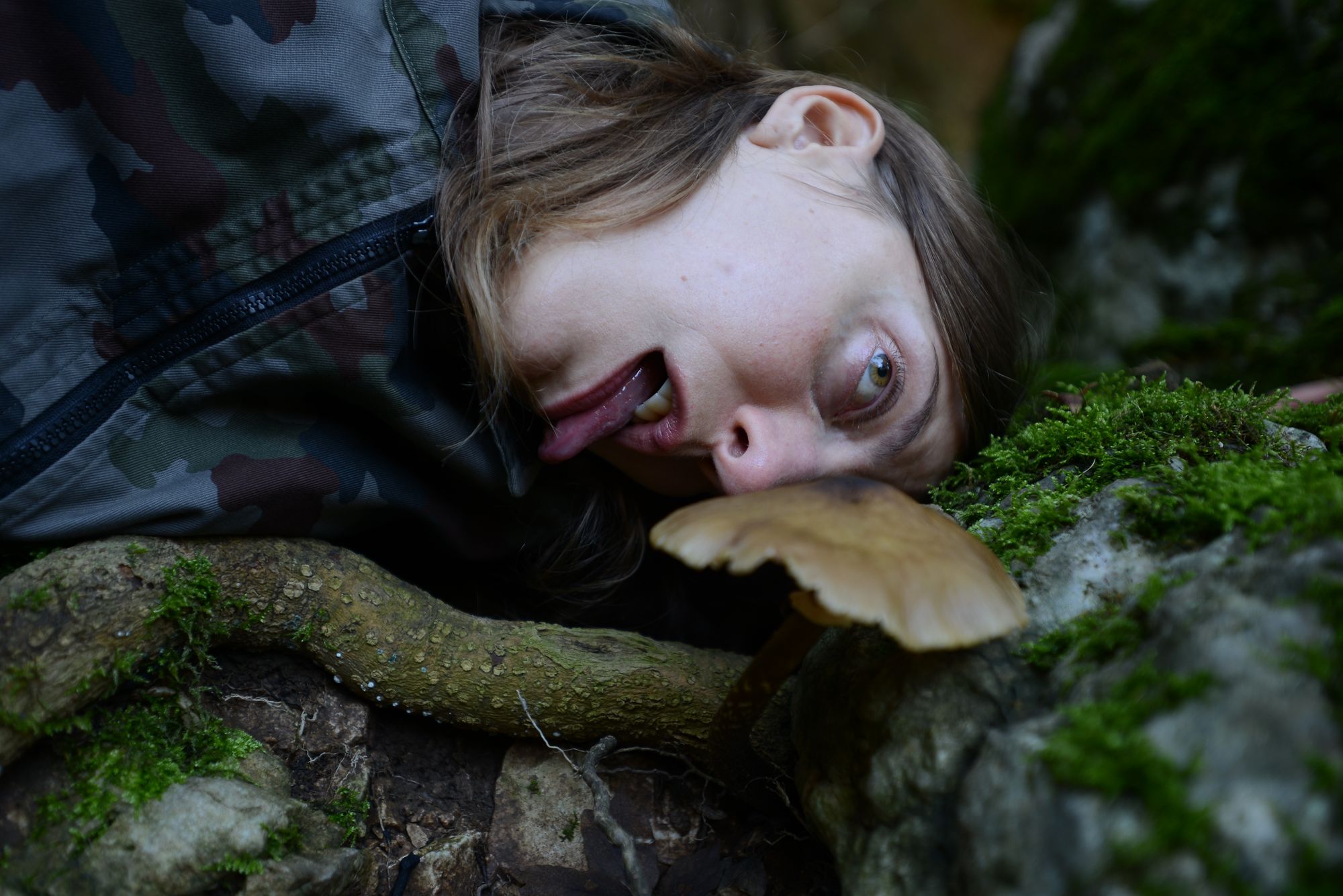ABOUT

Bio
Jatun Risba (they/them) is a migrant transmedia artist from Slovenia. Their work engages with ecofeminist and posthumanist discourses through performance art, conceptual art, relational art, and practices of abjection, détournement, and art intervention. Their practice cultivates interspecies reciprocity by altering and awakening sensory awareness through Vajrayana Buddhist practices and deviant uses of contemporary technologies. Their research explores the essential role and artistic potential of six “life matters” on Earth: air, water, carbon, soil, chlorophyll, and (menstrual) blood and devises experiences and tactics for overcoming the Anthropocene. Their practice evolves along two main trajectories: Arts for Health and Art as Nourishment for the Bodymind. Risba’s art is profoundly informed by their lived experience of radical self-healing from Multiple Sclerosis (2012–2019). They are the founder and co-facilitator of the global Live Art project Be-coming Tree.
As an artist, Jatun has exhibited and performed widely, including at Galerija O.K. in Rijeka; Crow's Nest in Baltimore (USA); Gigi Rigliaco Gallery in Italy, Studio Alta in Prague; Opens platform in Singapore, Prague Biennale Re-connect festival (2023, 2024); the Meta.morf 2022 Trondheim Biennale in Norway; the Cloud 9 pavilion at the Bangkok Biennial in 2020; Fabbrica del Vapore in Milan; Kersnikova Institute and Cirkulacija2 in Ljubljana; and Pixxelpoint festival (2008, 2019). Risba delivered artist talks, lectures and workshops internationally: at DRHA 2024: Banal devices at the University of Music and Theatre Munich; the Akademia Sztuk Pieknych in Wroclaw; the University of the Underground; the Goethe UNI Frankfurt; the Moving Image Research Lab in Montreal; the Strasbourg UNI; the Taboo, Transgression & Transcendence in Art and Science conference (2020, 2023). Their research papers and interviews have been published in various online and print publications, including Antennae: The Journal of Nature in Visual Culture, the Body, Space & Technology (BST) Journal, Utsanga.it online magazine, and ecoartspace.org. They received the a-n Artist Bursary in 2019, a fellowship from the ERSTE Foundation in 2020 and the Social Art Award in 2021. Risba holds a BA (Hons) degree from NABA–Nuova Accademia di Belle Arti in Milan (2009), and a PG Cert in Art & Science from Central Saint Martins–University of the Arts London (2020).
Artist statement
My art research is inspired by world’s wisdom traditions, such as Vajrayana Tibetan Buddhism and Slovene pre-Christian religion, and explores deviant uses of contemporary technology, like mobile phones, WiFi internet, sensors and microcomputers. Performative ritualism is used as a vehicle for unveiling the poetry and magic within everyday reality, in order to re-pair the modernist divide between Nature and Culture.
My work is informed by my lived experience of radical self-healing from Multiple Sclerosis (2012-2019) through unleashed dancing in public spaces (“dances of urgency”), guerrilla artistic interventions and a practice of different meditative and bliss-inducing techniques. These practices included clubbing, (self-)hypnosis and erotic expression. Collaboration with human, non-human and more-than-human entities is central to my art. It allows me to challenge and transcend personal echo-chambers for the sake of creating works that expand the view and add flash, weight and layers of complexity to the atomized experiences of the real. Art becomes a tool to spark creative strategies and mind-opening conversations about ethics and ecosocial justice that impact the way of inhabiting our inner, outer and sacred territories.
Another important characteristic of my practice is the cultivation of reciprocity and kinship with all forms of life. This is done by altering & awakening human sensory awareness, through physical and mental training and/or use of technology, based on the realization of the interconnectedness and interdependence of all phenomena. As an artist, researcher and pedagogue, I am firmly rooted in inclusive, accessible practices and strongly believe that the working process is as important as the outcome. I am actively engaged in bridging Art, Science and Humanities, wherefore each discipline opens the other to more expansive ways of engaging with reality.
Artist Portfolio & CV
Interactive portfolio (January 2025)
Detailed Curriculum Vitae (April 2025)
Ki-n: Towards a language of terrestrial kinship
As part of a research-creation process about worlding, Risba has been using the alternative pronouns 'ki' (sing.) and 'kin' (poss., plur.) since autumn 2019. Ki-n is fluid in terms of gender identity and sexual performance. In the realm of planetary kinship, all genders and pronouns are allowed and respected, as well as every practice of care and love.
The inspiration for this initiative originates in the work of Robin Kimmerer, a distinguished professor and botanist with native American roots who noticed that using the term 'it' for other species distanced humans from animals, plants and the Earth so she proposed using 'ki' instead. Risba – ki - extended this idea by using the terms ki-n to describe humans, more-than-human species and even non-living objects. By extending the notion of selfhood, language can become a means for overgrowing inter- and intra-species violence. This is the starting premise of this language-game. The language of kinship encourages people to think about not only different expressions of life but also all forms of matter as deserved to be cared for and also taken care of. To sum up, this art research explores the role of language in shaping human thoughts, behaviours and perceptions of suchness. It has been informed by the writings of philosophers, scholars and poets such as Donna Haraway, David Abram, Tim Ingold, Karen Barad, Édouard Glissant and others.
*+++ photo by Franco G. Livera from the making of the art film 'Salamandra, Salamandra, Salamandra'